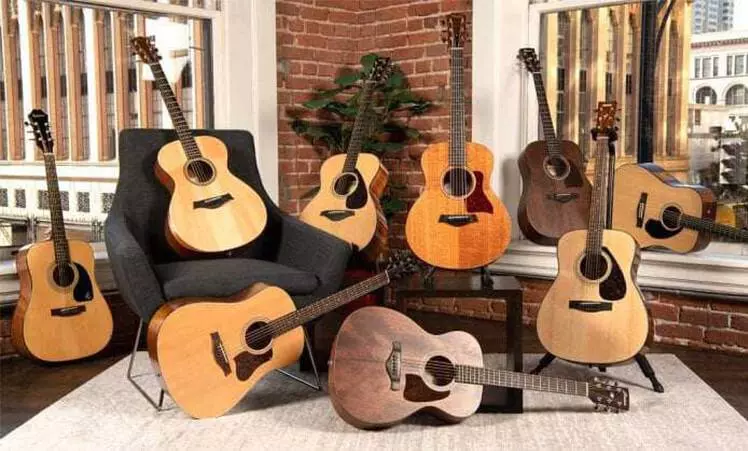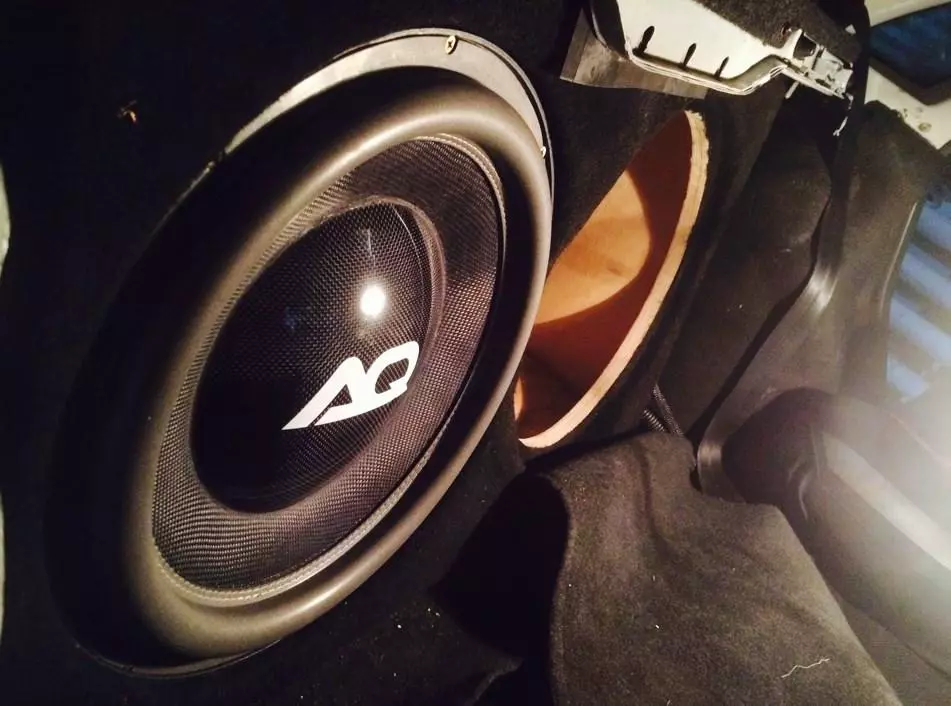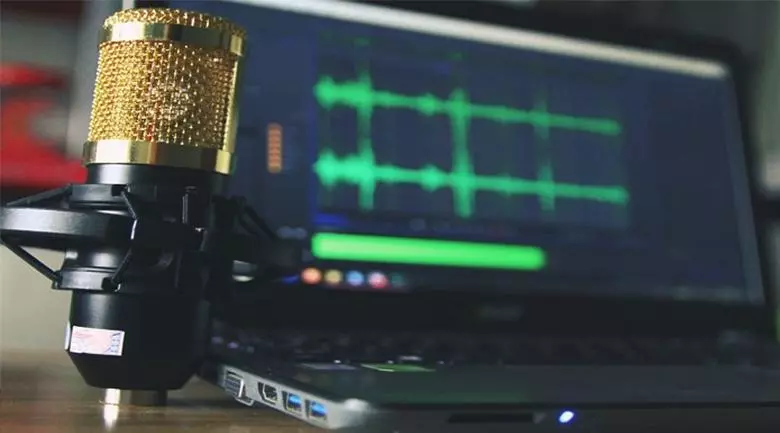How to choose a guitar for a beginners

Choosing your first instrument is a critical question for any beginner guitarist. And it should be taken as seriously as possible. Often a poor quality or improperly chosen instrument discourages you from making music and puts an end to your possible career. In this article, we’ll explain in detail how to choose a guitar for beginners, what you should pay attention to, which manufacturers you should look out for.
Guitar types
Decades ago, a couple, buying a good guitar was a real problem – instruments were bought from friends, ordered them abroad. Today the situation is dramatically different – music shop shelves are bursting with instruments’ all sorts, literally to suit every taste and purse. For the novice musician, navigating through this vast array is no easy task.
Before you buy, ask yourself a simple question: why do I need a guitar? Think about where you want to play it, what music kind you’re playing, how serious your ambitions are. Only after that should you go to the shop or order online.
The first thing a would-be guitarist needs to do is to decide what guitar kind he or she wants. Guitars different kinds differ in their sound, each one more suitable for performing certain styles. It’s best to learn on the instrument the same kind you intend to play later. There are three main types of guitar:
- classical;
- acoustic;
- electric
The guitar classification is more complicated, but this instrument other types are hardly suitable for a beginner. So, the guitars main types, their pros and cons for beginners.
Classic
Acoustic and classical guitars are very similar. The latter has a smaller body and a wider fingerboard. They have nylon strings, which makes it much easier for beginners to learn.
Compared to an acoustic guitar the classical guitar has a deeper and warmer sound, though its “voice” is somewhat quieter. Most classical instruments are traditionally played with a classical repertoire, such as romances or flamenco. No plectrums are used to play “classical”.
Although in recent years the classical guitar has become more versatile, it is increasingly used for strumming, playing blues and jazz. It can also be added that the classical guitar is the “oldest” type of classical guitar. It originated in Spain, which is why this guitar is often called a “Spanish guitar”.
Pros and cons
Now a few words about the “Spanish guitar” pros and cons. Among its undoubted merits are the following:
- Soft nylon strings are easily pressed. This makes it easier to learn for beginners as the fingers hurt less;
- The wide fingerboard reduces the “missing” the right strings likelihood, which often happens during the instrument mastering phase.
There are some drawbacks to the classical guitar as well:
- Only nylon strings can be installed on a classical guitar, the metal strings use will rather quickly lead the instrument into disrepair;
- This guitar type has a weaker and less expressive sound.
Acoustic
Acoustic guitars originated in the US around the last century beginning.
Compared to a classical instrument, it has a bigger body, a smaller neck and metal strings that produce a rich and resonant sound.
An acoustic guitar’s strings can have a different outer braid which makes a major difference to its sound. An acoustic guitar usually has more frets than a classical guitar.
Metal strings are ideal for playing with a plectrum, and the small width of the fingerboard makes it easy to pick up a barre. The instrument is very versatile: perfect for pop, rock, chanson, blues and jazz. Many renowned musicians consider “acoustic” to be a must before mastering the electric guitar.
Pros and cons
The acoustic guitar also has its strengths and weaknesses. Such instruments undoubted merits include the following:
- A louder and more expressive sound. Due to the large body and metal strings “acoustic” sound much richer than the classic one;
- Versatility. This guitar type is great for performing compositions in various musical genres.
Acoustic instruments have some drawbacks as well, including the following:
- Metal strings create problems for beginners. Until you get calluses on your fingers, it is painful to play. You can also put nylon strings on an “acoustic”, but they sound faded.
- Metal strings are harder to grip than nylon strings. Therefore, it is physically more difficult to play on an acoustic.
Electric guitar
The electric guitar is the instrument that is most commonly used for playing rock music. Although recently it has been increasingly used in other genres as well. For example, blues, pop, folk or jazz.
An electric guitar sound is produced through an amplifier, without which even the musician himself would hardly be able to hear the instrument. An electric guitar has a solid body and metal strings. As a rule, there are six. The body shape and size can vary. The most common ones are: “Stratocaster”, “telecaster”, “Fanging”, “Superstrat”.
Modern amplifiers allow you to use special effects and settings a variety when playing electric guitar, so you can implement any ideas.
Pros and cons
The electric guitar has its advantages and disadvantages. Such an instrument undoubted advantages include the following:
- The electric guitar can be customised. This instrument allows you to adjust not only the volume but also the timbre and other parameters;
- With electric guitars, the strings are easy to pick up.
There is this guitar type some disadvantages as well:
- High price. Electric guitars usually cost more than acoustic and classical instruments. Apart from the guitar itself, you will have to buy an amplifier as well which you will not be able to play without;
- Binding to power sources. You won’t be able to play an electric guitar on the bench outside your building or by the campfire – you’ll need a power source for that instrument. Electric guitars are most often played at home, in studios or concert venues.
Electric acoustic guitar
This is an acoustic and electric guitar hybrid. These instruments look like acoustic guitars but they have pickups so they can be plugged into an amplifier. Typically, electric acoustic guitars are used if you want to amplify a conventional acoustic instrument sound.
Beginners seldom buy such guitars because they are quite expensive and their amplification function is not necessary for beginner musicians.
Other Guitars
There are guitars many more varieties. For example, there are hollow electric guitars that are great for playing jazz and blues compositions. There are acoustic twelve-string guitars with a richer, more expansive sound. A separate grouping is the four-stringed bass guitar. Then there is the ukulele, a tinkling, four-stringed Hawaiian guitar.
However, all listed instruments are intended for professional musicians or at least for very advanced amateurs. Beginners should hardly look in their direction.
Guitar for your child
It’s best to start guitar lessons at an early age. Not only will this allow your child to develop harmoniously, it will also raise their profile with friends and acquaintances.
When picking a guitar for your child it’s important to consider their age and physical condition. A classical guitar with nylon strings is ideal for kids. As for the size of the instrument, it’s easy to find a guitar in any shop today that’s just right for your little one’s height. Look at the recommendations in the chart when you’re shopping for an instrument.
| Child’s height, cm | Instrument Size |
|---|---|
| 100-115 | ¼ |
| 116-135 | ½ |
| 136-150 | ¾ |
| Above 150 | Regular guitar |
Children under age four years should buy a ukulele or guitar-level – a guitar with six strings but a small size. It’s important your child likes the way the instrument looks. Remember the guitar is just a toy to him so it needs to be pretty. Don’t go for an overpriced instrument for your child, but don’t skimp on quality either.
Buying a guitar: what things to look out for?
Buy your guitar with as much responsibility as you can. Don’t just study the instrument too well, but want to try it out for yourself. It’s usually hard for a beginner to test it out on your own. That’s why it’s better to take an advanced friend or your guitar teacher with you. If you do have to choose the instrument on your own, take note of the following points:
- The appearance of the instrument. It should be scratches, chips, cracks and poorly glued seams free. The lacquer should lie flat, without swellings or incomprehensible spots.
- The neck quality. It should be as straight as a gun barrel. You may check it by the neck side-lines – it shouldn’t bend on its whole length.
- The strings. They shouldn’t make any noise, they shouldn’t protrude beyond the fingerboard’s surface. Each string has to be checked separately.
- The tuners. You should check jibs’ work – they should move smoothly and noiselessly.
As a rule, there are fewer problems with expensive instruments than with cheap ones. But here it is not the guitar’s manufacturer who plays a role but its storage and transportation conditions.
The most important criterion for choosing a guitar is its sound. There shouldn’t be any compromises – don’t buy an instrument you don’t like the sound of. Understand that two guitars, the same model and brand even, often have different voices. That’s why it’s important to try the instruments before buying – retailers usually aren’t stopping you from doing so.
The material
A crucial factor in a guitar’s quality and sound is the material it is made of. All modern guitars are made from wood, plywood or MDF. The basic principle is simple: the more wood in an instrument, the better it’s sound. This is true for all kinds of guitars, both electric and acoustic.
Electric guitars
Modern electric guitars are made from ash, linden, alder, mahogany and other woods. Lime, for example, produces a good, resonant sound with a pronounced midrange, while ash greatly enhances the upper register. Mahogany is considered an “elite” wood and is used to make expensive electric guitars. It provides a rich sound with excellent bass.
“Classic” and “Аcoustic”
Spruce, walnut, cedar, rosewood and mahogany are used for acoustic and classical instruments. They have very different acoustic properties. Spruce, for example, has a sonorous and gravelly sound, cedar has a deep and mellow tone, while rosewood is stringy and muffled.
Fully wooded instruments are expensive – not necessarily something you should buy for a beginner. It’s best to choose a partially wooden guitar with MDF or plywood inserts. You might add that listening to a guitar will give you a lot more information about it than studying it thoroughly.
Guitars: new and used
Which guitar is better – new or used? This is the most debatable question among musicians because it has nuances lot.
At first sight, it is obvious: it is better to choose a new instrument than a used one. However, buying a guitar off-hand also has significant advantages:
- Many musicians note that the older instruments sound is richer and brighter than new ones. That is, of course, assuming they are properly cared for;
- An old guitar can be improved by the previous owner;
- A second-hand instrument definitely won’t show any unexpected faults. Such things are usually visible in the use first few months;
- Buying handmade will save you money.
It’s hard for a beginner to choose a good used guitar, it takes experience and knowledge. That’s why it’s better to take a more experienced friend along to inspect the instrument. If you approach the buying a used guitar wisely issue, checking the instrument thoroughly, it is quite possible to get an excellent guitar for good money.
Sizes
Five standard guitar sizes are commonly stated in regular fractions: ¼, ½, ¾, 7/8 and 4/4. This allows each person to choose the instrument that best suits their anatomy. To play comfortably, the instrument has to match the height, the hands and the musicians’ palms size length. Two dimensions are most important for the instrument sound:
- Overall length from the body edge to the fingerboard head;
- Bezel length – the distance from the neck bottom to the neck top.
A guitar linear characteristics are important to its sound. The bigger the body, the deeper the sound is born. The instrument ‘voice’ develops new overtones and an interesting after the tone. However, a large instrument is difficult for small stature people or children to hold.
Some tables relate a musician height to a guitar size. But it’s better not to calculate these, but simply pick up the instrument and try playing it. If it’s comfortable to hold, it’s the right size for you.
Brands
Guitar brands are another very controversial issue that every experienced musician has an opinion on. However, there are still established authorities in the guitar world, and some manufacturers are well worth recommending to beginners as well.
Acoustics
Takamine, Yamaha and Fender are considered to be the acknowledged leaders in making acoustic guitars. We can advise you to consider the following instruments:
- Yamaha F310. This instrument is made of mahogany and rosewood. The guitar has a deep and rich sound while being quite attractively priced. Therefore, this instrument is an excellent choice for beginners;
- Fender Squier SA-105. This guitar is made of mahogany, which gives it a great sound. It belongs to the medium price category and is suitable for beginners.
- Takamine Jasmine JD36. This instrument belongs to the budget series Jasmine, which presents quality instruments at an affordable price. Therefore, it is perfectly suitable as a first guitar for a beginner.
Classic
Fine classical guitars are made by Ibanez, Yamaha and ProArt. There are models among them that are reasonably priced. You can choose from:
- Yamaha C40. This instrument is made from spruce and rosewood. It has a deep sound with a rich and mellow timbre. The cost of the guitar makes it quite affordable even for beginners.
- Ibanez GA3. A beautiful classical guitar made of spruce and mahogany. It has a rich and mellow sound with a beautiful timbre. Besides high quality, the instrument boasts an attractive price, making it a good option for beginners.
- Pro Arte GC 242 II. Pro Arte classical guitars cost a bit more than average, but their sound quality is considered to be higher. This model is made of maple and selected cedar, it has not only excellent sound but also a very attractive design.
Electric Guitars
When it comes to electric guitars, the highest quality instruments for beginners are offered by Ibanez, Yamaha and Fender. We can advise you to choose the following models:
- Fender Squier Bullet. The instrument is made of basswood and maple and has two pickups, a tremolo system and a humbucker. The instrument sounds at the high-class models level, so it is used not only by beginners but also by seasoned musicians;
- Ibanez GRG150. This model is made of maple and poplar, it has two pickups and a tremolo system. The guitar is called a “workhorse” for rehearsals and regular lessons. But at the same time, it has a good sound and good build quality. Therefore, it is recommended for beginners;
- Yamaha Pacifika 112. The guitar is made of pine and maple and has three pickups and a tremolo system. The model has an attractive and ergonomic design and a very decent sound. Musicians consider its voice to be superior to instruments in its price category.
Accessories
One guitar isn’t enough – you need accessories. These include:
- Case. It is needed to carry the instrument, as well as to protect it. It’s better to choose models with insulation to protect your guitar not only from mechanical damage but also from temperature fluctuations, excessive moisture;
- Strings an extra set. Professionals advise changing your factory-installed strings immediately after purchase. They are not usually of high quality. But even if you don’t, a spare set is essential. If the strings are played intensively, they will last approximately 3-4 months. The strings condition greatly influences your instrument sound quality;
- Strap. An indispensable accessory, without which it is impossible to play standing up. No need to choose a famous brand an expensive model, the main thing is to have a belt that is wide, comfortable and soft;
- A special stool. A classical guitar stool is usually a special one with a footrest. It sets the proper body position required by playing this instrument technique. Chairs are also available for acoustic guitars, but they are not as relevant;
- Tuner. You need a special tuner to tune your instrument properly. It’s best to choose a model that attaches to the fingerboard with a special clothes peg. It can read your guitar’s vibrations and give you the most accurate information. Of course, you can download a free app to your smartphone, but such utilities respond only to sound, so they don’t give you an accurate tuning;
- Maintenance tools. Your guitar needs regular care, and you should buy special products for this. The standard kit includes cleaners, polishes, sprays, wipes, and string care fluid. There are oils to protect the neck from dirt and dust.
Your guitar needs to be handled with care. It must not be kept in a too humid place or near a radiator or air-conditioner. If you don’t intend to play the instrument for a few days, loosen the strings. The pins should be lubricated periodically and the strings should be changed every few months. Even at home, it is better to store your instrument in its case.
According to statistics, four out of five people who buy a guitar eventually quit making music. We hope this article will help you buy a great instrument and become the chosen one to whom the guitar will be a faithful friend for years to come.










